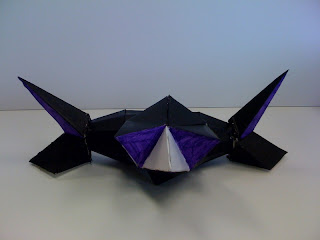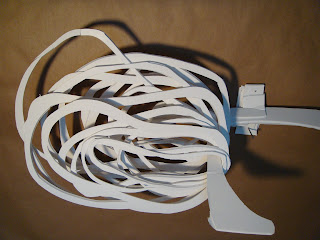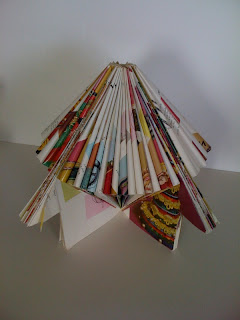Final Project :
(Re) collection of Objects:
A Biographical-Toy
1. Recognition of a Problem: The purpose of this project is to apply design concepts and strategies researched along the course in the construction of a “biographical” toy.
Your Toy design will be based on:
A) Conceptually, in a biographical, self-referential narrative.
B ) Aesthetically and Structurally, in the application of serial planes, polyhedral units, or the combinations of this deconstruction, construction or reconstruction strategies researched in class based on recycling found object.
While designing the piece, consider the concepts of negative space, rhythm, pattern, mass and gravity, balance, unity, harmony, emphasis, as well as color and texture.
The overall size will depend on each student’ project, based in the concept and materials used and the scale in relation to your own body/targeted age, interaction expected with the toy/game, etc.
This is to be reviewed with instructor along the process.
3. Research and Preparation:
· Take notes on the videos and artists slide shows presented in class.
· Research on artists working with found objects, toys, sculptures. Take notes, sketches, print out information of the ones that you feel related to in conceptual and/or aesthetical terms.
· Collect materials that you feel may be conceptually meaningful and structurally suitable in the construction of your piece.
4. Analysis
· You should develop several sketches. Evaluate these sketches and synthesize your ideas.
· Based on your sketches and concepts, begin to explore your ideas three dimensionally now, based on the materials collected and applying 3D Design elements and principles.
5. Synthesis
Synthesize your sketch models into a final concept. Keep in mind that the design will continue to develop along construction.
6. Evaluation
Evaluate the final design based on the principles and elements of design studied. Make sure that your final design meets all of the project requirements, and most especially, aesthetically responds to your intended concept.
7. Presentation
· Be sure that the instructor has reviewed your final sketches and discussed the concept.
· Work neatly and accurately. Quality and craftsmanship is important to the overall design.
8. Implementation:
· Each student will give a brief oral presentation.
· You will write a brief reaction paper about your concept in which the project will be based as well as on the development and final outcome of your project
· Take photos of your construction process from final objects to Final Piece. At least 5 steps documenting the narrative of your toy creation.
· Take photos of your final project from a variety of views.
· Post photos, sketches and reaction paper in your Blog
CRITIQUE will be held on FINAL EXAM date.
IMPORTANT: PHOTO DOCUMENTATION AND REACTION PAPER SHOULD HAVE BEEN POSTED ON LINE PRIOR TO YOUR EXAM DATE. FAILURE TO DO SO, WILL AFFECT YOUR FINAL GRADE.
YOUR FINAL PROJECT will be evaluated based on:
Design:
· Concept
· Creativity
· Craftsmanship
· Application of Elements and Principles of Design
Design Development
· Research
· Preliminary concepts - sketches and models
Oral Presentation
· Class presentation
Blog Requirements
· Photographs: Documentation of process and the final outcome.
· Reaction paper.












































